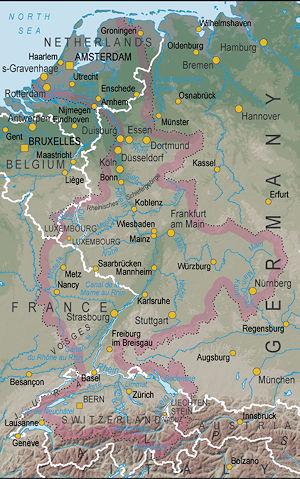|
Previous Page |
|
Previous Page |
|
. |
Nobody has found firm documentation about anything related to Ludwig in Germany, but tradition in almost all the Frisinger families has him coming from Freising in Bavaria or at least somewhere in Bavaria, sailing down the Rhine and departing for British America from Rotterdam. There is one tradition that he came from the Black Forest. The Frisingers spread out quite a bit within a few generations so this idea of the Bavarian origin clearly goes way back.
According to Hopeful Journeys, German Immigration, Settlement, and Political Culture in Colonial America, 1717 to 1775 by Aaron Spencer Fogleman, published 1996 and originally presented as the Author’s thesis (Ph.D.) – University of Michigan, 1991, about 85% immigrated to Eastern Europe with the remaining 15% coming to British North America. The advantage of Eastern Europe was that it was a much shorter and easier trip, offered land, religious freedom, and protection from enemy attack. Also there were often significant governmental help for immigrants. The advantage of British North America was huge amounts of land and very minimal governmental interference. Religious freedom is often cited but it was not all it was cracked up to be. Officially the British did not accept Roman Catholics, a major part of the South Western German Population. The passenger lists break out the number of Catholics in their list of the immigrants and the number is normally small. The threat of Indian attack was always real and in Pennsylvania for most of the Colonial period, was a pacifist society (Quaker) and did relatively little to protect its frontier.
In summary I see 4 possibilities.
1. He came from Northern Bavaria, not close to Freising at all.
2. He took a relatively difficult trip that was partly by land.
3. He was from the Black Forest which is relatively close to the Rhine and startles the range of mountains between the Rhine watershed and the one to the east in the state of Baden-Württemberg. He would have either lived in the Rhine watershed or lived close. One family history has him from here. The Palatinate is another possibility based on the Ship's records. It is adjoining Württemberg and is on the Rhine so that is about the same strory.
4. The Bavaria story is not true, Bavaria is the best known district in Germany and may have been mentioned just to give people a story when they did not really remember or because the city of Freising is in Bavaria and the name is similar to Freysinger.
I have links to some more relevant maps. Baden-Württemberg and The major tributaries of the Rhine.


